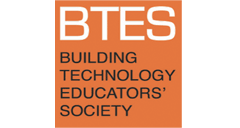Maps, Videos, and Structures: Visualizing Structural Concepts through Media-Based Assignments
Author ORCID Identifier
DOI
https://doi.org/10.7275/48xp-rf93
Abstract
Within building technology educators in architectural education, there is a frequent exploration of structural pedagogy. How best can the theory of structural design be taught? Are calculations necessary, for example? What participatory learning assignments can guide architectural students to haptic and intuitive understandings of structure? This paper adds to this discussion by presenting two exercises designed to capture the imagination of students whose environment is saturated with Snapchat, data visualization, and Instagram.
The first assignment is a digital “term paper” for graduate students that examines earthquake design through an analysis with GIS and presenting a “Story Map” of an historic seismic event. Learning objectives for the class included:
- to understand how a building structure behaves in a seismic event,
- to gain the ability to determine and apply seismic loads,
- and, to understand the role of the built environment and design in seismic events.
The visualization of a seismic event encourages spatial thinking and understanding of scale as well as the impact of the selection of construction type on the local communities after and earthquake.
The second project is a version of “teaching the teacher” with undergraduate students authoring two-minute videos explaining one of the primary loads on a building – live, dead, snow, wind, or seismic. Learning objectives for the assignment are:
- to understand the types of loads on a building,
- and to increase students’ ability to visualize, problem-solve, and understand these demands.
Storyboarding, defining and redefining the load, filming, and editing allowed for students to use their creativity, narrative voice, and graphic skills in learning and conveying the subject material.
In both cases, students moved beyond the calculation, though did not leave the numbers completely behind. This presentation will share the assignment development, outline the support from campus units, show examples of student work, present lessons learned, and share reflections by students on the projects.
Recommended Citation
Uihlein, Marci
(2019)
"Maps, Videos, and Structures: Visualizing Structural Concepts through Media-Based Assignments,"
Building Technology Educator's Society: Vol. 2019
Caryn Brause, Peggi L. Clouston, Naomi Darling (Eds.), Amherst, MA, 2019.
https://doi.org/10.7275/48xp-rf93
Available at:
https://scholarworks.umass.edu/btes/vol2019/iss1/44

